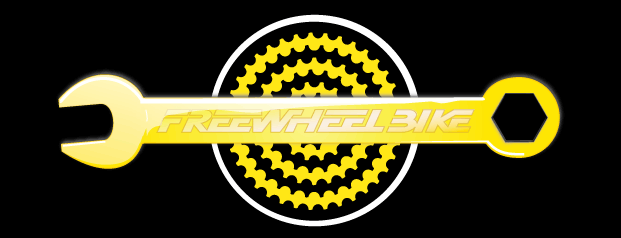Tuesday, January 22, 2013
The March of Progress
I remember when mountain bike manufacturers wisely started to put straight-bladed rigid forks on their mountain bikes. It was an adorable little trend started by some well-meaning folks with names that rhymed with Richard Cunningham. Yep, feel all that steering precision! Lighter weight? Sign me up! Then you ride the front wheel over anything taller than a nickel with the obligatory 50 PSI in the tires, and next thing you know you're being fitted for dentures. Straight-bladed forks were awesome!
Then this hoser named Paul Turner came along and tried to single-handedly sissify the sport of mountain biking forever by hanging an air-sprung, oil-damped, slurping monstrosity off the front. Suspension: 48mm of sticky, slurpy suspension. That 48mm number was theoretical: the only way you would see that is if you hit a railroad track stiff-armed at about 20 mph. Sure, the RS1 was flexy, leaky, and primitive, and it didn't last too long; but it changed the landscape forever. It made you faster over rough terrain because it kept you in control. "Control" was more-or-less responsible for the mountain bike boom of the mid-90's.
"Yeah, the front tire sticks to the ground in corners. Pfffft. But you dress funny, mister booger britches," hissed the purist opposition through their dentures.
The suspension thing more or less took off. Then, one day, Rock Shox turned into a big ole company and Paul Turner went and did it all over again.
He started a company known as Maverick. Their Mono-Link rear end was kind of weird, and rode like a GT I-drive with less stiction. But it sort of works if you like to just lean back and slam stuff with your back wheel, and some people really like it. Maverick also made a couple of inverted forks: the SC-32 (single crown) and the DUC-32 (double crown). Both were light and plush, but the SC-32 was known for being a tad on the flexy side. Maybe more than a tad: sometimes, if you really honked on the front brake, your front tire would swing back rub your down tube. But it was light and plush, and times were simpler then.
Maverick forks also required a hub with a proprietary 24mm axle to prevent independent leg movement and lateral wheel flop. It works pretty well, but there's that pesky word "proprietary." Now's a good time for a life lesson for all of you tinkerers out there with aspirations for inventing the next big thing: if your product requires a proprietary means to attach to a bicycle and your last name is not Shimano or something like that, plan to be hated. It's the way of things.
The SC-32 fizzled on XC bikes because of the flex and the front axle. It went out of production a few years ago. End of story?
Not even almost the end of the story! A fat bike tire fits through the fork with just enough clearance. The flex really doesn't matter on a fat bike: is mitigated by the weight of the wheel. This is a hot setup when old snow packs down to frozen stutters. Kind of like January in Minnesota, when it's ten miles below zero after a week where half the snow melted. Can you say "frozen hiker tracks?" Mix in some Grip Studs and you're ready to take on the choppiest trail!
Is suspension for everybody? In 1991 I said "no way." Today, I say "probably not." But it turned out that suspension was just the ticket for about 95% of riders on the dirt. Will the snow experience such a revolution? Who can say?
But I have to admit, that looks like a lot of fun.
